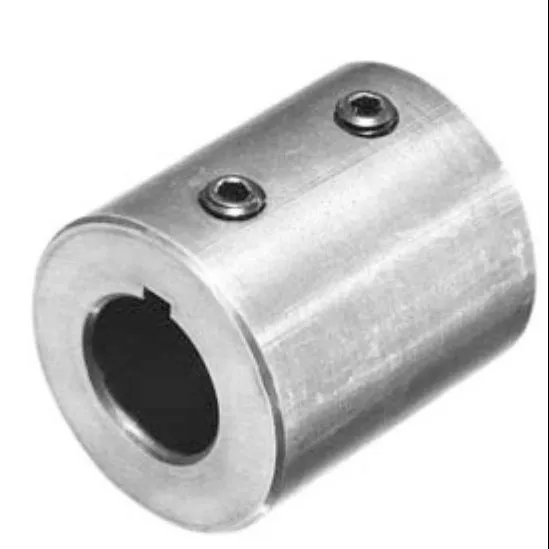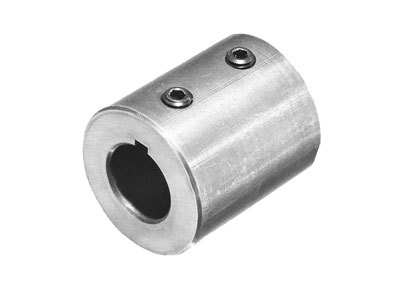Product Description
Xihu (West Lake) Dis. Dingli Steel Sleeve Co., Ltd
Add: Xihu (West Lake) Dis., HangZhou City, ZheJiang Province, HangZhou, ZheJiang , China
Product Parameters
Standard rebar couplers made by raw material 45# carbon steel with competitive price and divided into standard couplers, positional rebar couplers, and transition rebar couplers.
|
Name: |
Thread Rebar Couplers Standard Type |
|
Used for Rebar: |
HRB400/Grade 65/ and so on with rebar yield strength same as 500Mpa or lower than that. |
|
Raw Material: |
S45C -yield strength 420Mpa, Tensile strength: 600-650MPa |
|
Size: |
16mm/18mm/20mm/25mm/28mm/32mm/36mm/40mm |
|
Packing: |
By bags and pallets packing, or wooden case packing as required (25KG smaller packing, 1700KG per pallet) |
|
Sample: |
Free existing samples for checking dimension and quality |
|
Production time: |
15-40 days based on different quantity after receive the prepayment |
|
Shipping Port: |
Xihu (West Lake) Dis.g,ZheJiang Port, ZheJiang Port, China. |
|
Payment Terms: |
TT / LC |
|
Certificate: |
ISO/ CE |
|
SIZE (mm) |
Out Diameter (mm) |
Length (mm) |
Pitch (mm) |
N.W (KG) |
PACKING IN ONE BAG (NOS) |
1 BAG WEIGHT (KG) |
Approvals/ Certificate |
|
|
16 |
24 |
42 |
2.5 |
0.092 |
250 |
23.00 |
CE / ISO |
|
|
18 |
27 |
45 |
2.5 |
0.136 |
200 |
27.20 |
CE / ISO |
|
|
20 |
30 |
50 |
2.5 |
0.159 |
132 |
20.98 |
CE / ISO |
|
|
22 |
33 |
54 |
2.5 |
0.21 |
121 |
25.41 |
CE / ISO |
|
|
25 |
38 |
62 |
3.0 |
0.34 |
80 |
27.20 |
CE / ISO |
|
|
28 |
42 |
68 |
3.0 |
0.46 |
56 |
25.76 |
CE / ISO |
|
|
32 |
48 |
76 |
3.0 |
0.633 |
42 |
26.58 |
CE / ISO |
|
|
36 |
53 |
84 |
3.0 |
0.905 |
27 |
24.43 |
CE / ISO |
|
|
40 |
59 |
95 |
3.0 |
1.16 |
25 |
29.00 |
CE / ISO |
|
1. Standard rebar couplers Introduction
Standard rebar coupler belongs to Rolling technology, it is a parallel-thread mechanical splicing system used for the 16mm to 40mm reinforcing bars mechanical connections. This system is first peeling the rebar rib and then doing thread by cold rolling, this technology can meet with China standard of JGJ107-2571, USA standard of ACI318, UK standard of BS8110, VN standard of TCVN8163, and other international standards. The couplers can be divided into standard couplers with all right-hand thread, and also positional rebar coupler with 1 side left-hand thread another size right-hand thread, also it has transition couplers which 2 sides have different diameters. Also, this coupler has a competitive price over super couplers and is suitable for little lower rebar grades such as HRB400 or HRB500 rebar, it has full sizes from 16mm to 40mm.
2.45# steel carbon steel rebar couplers Features and advantages
a.Saving cost and easy operation than the lapping of rebar
b.One time loading can finish the rib peeling and thread rolling together.
c.Single step process, only 1 machine, 1 operator.
d.Assemble by visual inspection
e.Standard ISO parallel Metric Thread designs.
f.Used for many kinds of connections for a position or transition couplers
CPDL Rebar Coupler China Steel Rebar Coupler Manufacturers OEM/ODM On-demand Customized Rebar Splicing Coupler Wholesale Thread Rebar Couplers Standard Type
Product Description
FAQ
1. Q: Are you a trading company or manufacturer?
A: We are an original equipment manufacturer.
2. Q: How long is your delivery time?
A: It is according to the model and quantity.
Generally, it is 3-5 days if the products are in stock.
It will be 15-30 days if you want to customize the products
3. Q: What are your terms of payment?
A: We accept T/T, Western Union, Money Gram, PayPal, Alibaba Escrow, etc.
Payment<=USD 5000, 100% in advance.
Payment>=USD 5000, 30% T/T in advance, balance before shipment.
4. Q: Do you provide samples? Is it free or extra?
A: Yes, we could offer the sample for free charge, but clients do not need to pay the cost of freight.
/* March 10, 2571 17:59:20 */!function(){function s(e,r){var a,o={};try{e&&e.split(“,”).forEach(function(e,t){e&&(a=e.match(/(.*?):(.*)$/))&&1

How do Sleeve Couplings Contribute to Reducing Vibrations and Noise in Rotating Equipment?
Sleeve couplings play a significant role in reducing vibrations and noise in rotating equipment. Their design and material properties contribute to damping vibrations and absorbing shocks, resulting in smoother and quieter operation. Here’s how sleeve couplings achieve this:
1. Flexibility and Misalignment Compensation:
Sleeve couplings have a certain degree of flexibility, which allows them to accommodate small misalignments between the connected shafts. When the shafts are misaligned, the sleeve coupling can flex and adjust, reducing the transmission of vibrations from one shaft to the other. By compensating for misalignments, sleeve couplings minimize the generation of vibrations and the resulting noise.
2. Shock Absorption:
During sudden starts, stops, or changes in load, rotating equipment can experience shocks and impact loads. Sleeve couplings have some level of shock absorption capability, which helps dampen the effects of these shocks. By absorbing shocks, sleeve couplings prevent the transmission of high-frequency vibrations and noise to the rest of the system, resulting in a quieter operation.
3. Resilient Material Selection:
The choice of materials used in sleeve couplings also contributes to vibration and noise reduction. Certain materials, such as rubber or elastomers, are known for their damping properties. These materials can be incorporated into the design of sleeve couplings to absorb and dissipate vibrations, effectively reducing noise levels in the system.
4. Uniform Torque Transmission:
Sleeve couplings provide uniform torque transmission between the connected shafts. This balanced torque transmission minimizes torsional vibrations, which can lead to noise generation in the system. By maintaining a smooth torque transfer, sleeve couplings help achieve quieter and more stable operation.
5. Proper Installation and Maintenance:
Proper installation and regular maintenance of sleeve couplings are essential for their optimal performance in reducing vibrations and noise. Ensuring that the coupling is correctly aligned and well-lubricated can further enhance its ability to dampen vibrations and minimize noise levels.
In summary, sleeve couplings contribute to reducing vibrations and noise in rotating equipment by providing flexibility to accommodate misalignments, absorbing shocks, using resilient materials, and ensuring uniform torque transmission. Their ability to mitigate vibrations and noise enhances the overall performance and reliability of the rotating equipment, making them a preferred choice in various industrial applications.

How do Sleeve Couplings Compare to Other Coupling Types, such as Flexible or Rigid Couplings?
Sleeve couplings, flexible couplings, and rigid couplings are three common types of couplings used in mechanical power transmission. Each type has its unique characteristics and applications. Here’s a comparison of sleeve couplings with flexible and rigid couplings:
- Sleeve Couplings: Sleeve couplings are simple and cost-effective couplings that join two shafts end-to-end. They provide some flexibility to accommodate slight shaft misalignments and are suitable for low to moderate torque applications. They are easy to install and do not require extensive maintenance. However, they have limited misalignment compensation and cannot handle significant shaft offsets.
- Flexible Couplings: Flexible couplings are designed to handle greater misalignments compared to sleeve couplings. They can accommodate angular, parallel, and axial misalignments, providing higher flexibility. Flexible couplings dampen vibrations and reduce shock transmission, contributing to smoother operation. They are available in various designs such as elastomeric, beam, and disc couplings, each offering specific benefits. Flexible couplings are ideal for applications where misalignments, vibrations, or shock loads are significant.
- Rigid Couplings: Rigid couplings are designed to connect shafts in a straight and rigid manner, without any flexibility. They provide accurate shaft alignment, making them suitable for precision applications. Rigid couplings are robust and transmit torque with high efficiency. However, they cannot accommodate misalignments and are susceptible to vibrations and shocks. Rigid couplings are commonly used in applications where precise shaft alignment is critical.
Choosing the appropriate coupling type depends on the specific requirements of the application:
- Alignment Requirements: If the application demands accurate shaft alignment and no misalignment compensation is needed, rigid couplings are suitable. For moderate misalignments, sleeve couplings may be sufficient, while flexible couplings are preferred for significant misalignments.
- Vibration and Shock Damping: If vibration and shock absorption are essential, flexible couplings are preferred due to their ability to dampen vibrations. Sleeve couplings have limited vibration damping capabilities, while rigid couplings do not dampen vibrations.
- Torque and Load: For low to moderate torque and loads, sleeve couplings are cost-effective choices. For higher torque applications with misalignment compensation, flexible couplings are preferred. Rigid couplings are suitable for high torque and precise alignment applications.
In summary, sleeve couplings provide a basic connection between shafts with limited misalignment compensation. Flexible couplings offer higher misalignment accommodation and vibration damping, making them versatile for various applications. Rigid couplings excel in precise shaft alignment requirements but lack flexibility and shock absorption.

What is a Sleeve Coupling, and How is it Used in Mechanical Power Transmission?
A sleeve coupling is a type of flexible coupling used in mechanical power transmission to connect two shafts and transmit torque between them. It consists of a hollow cylindrical sleeve with an inner diameter that matches the shafts’ outer diameters. The sleeve coupling is placed over the ends of the shafts, and its flexibility allows for some misalignment between the shafts while transmitting rotational power from one shaft to the other.
The sleeve coupling is a simple and cost-effective coupling solution commonly used in various industrial applications. Its design allows for easy installation and maintenance, making it suitable for applications where frequent shaft disconnection and reconnection are required.
Here’s how a sleeve coupling works in mechanical power transmission:
- Shaft Connection:
The sleeve coupling connects two shafts that need to be linked together to transmit power.
- Flexible Design:
The flexibility of the sleeve coupling allows for some angular and axial misalignment between the shafts. This flexibility is achieved due to the clearance between the inner diameter of the sleeve and the outer diameter of the shafts.
- Torque Transmission:
When one shaft rotates, it transfers torque to the sleeve coupling. The flexible nature of the coupling allows it to compensate for minor misalignments and still transmit torque smoothly to the other shaft.
- Reduced Vibration and Shock Absorption:
The flexibility of the sleeve coupling also helps dampen vibrations and absorb shocks, preventing them from transferring between the connected shafts. This feature contributes to the smooth and efficient operation of the connected machinery.
- Limitations:
Sleeve couplings have their limitations, including lower torsional stiffness compared to other coupling types, which may limit their use in precision applications with high torque and speed requirements. Additionally, sleeve couplings are not suitable for applications with significant misalignments or when precise angular alignment is crucial.
In summary, a sleeve coupling is a flexible and straightforward coupling used in mechanical power transmission to connect two shafts while allowing for some misalignment. Its simple design and ability to absorb shocks and dampen vibrations make it a popular choice for various industrial applications where precision alignment is not critical.


editor by CX 2024-02-26
